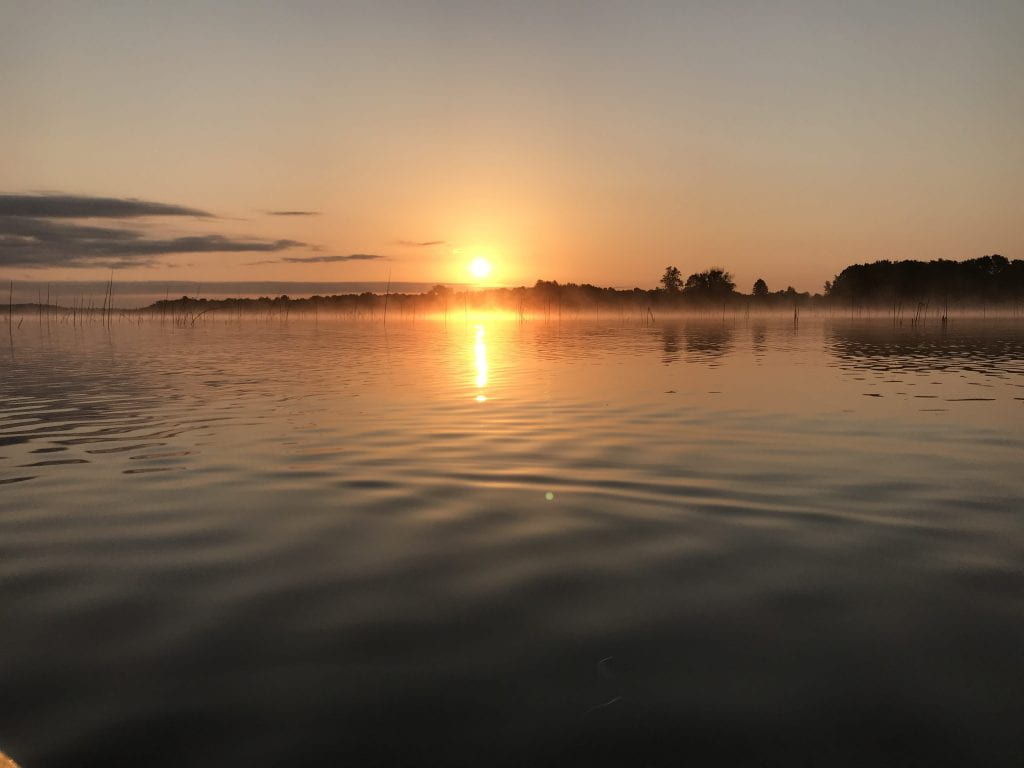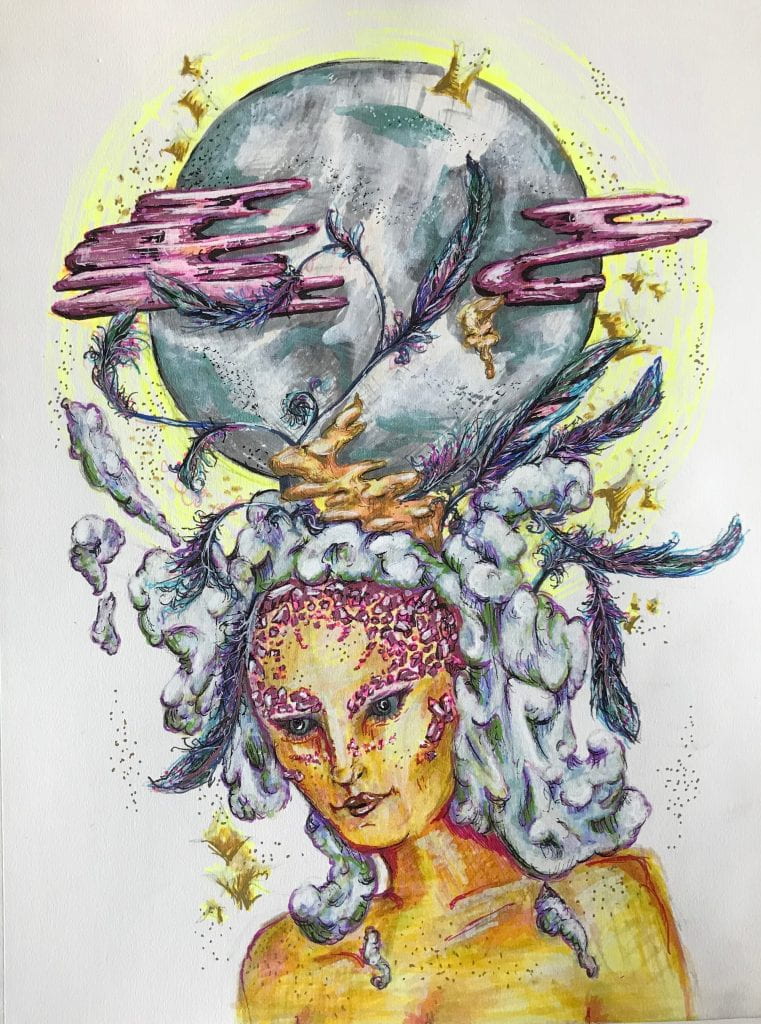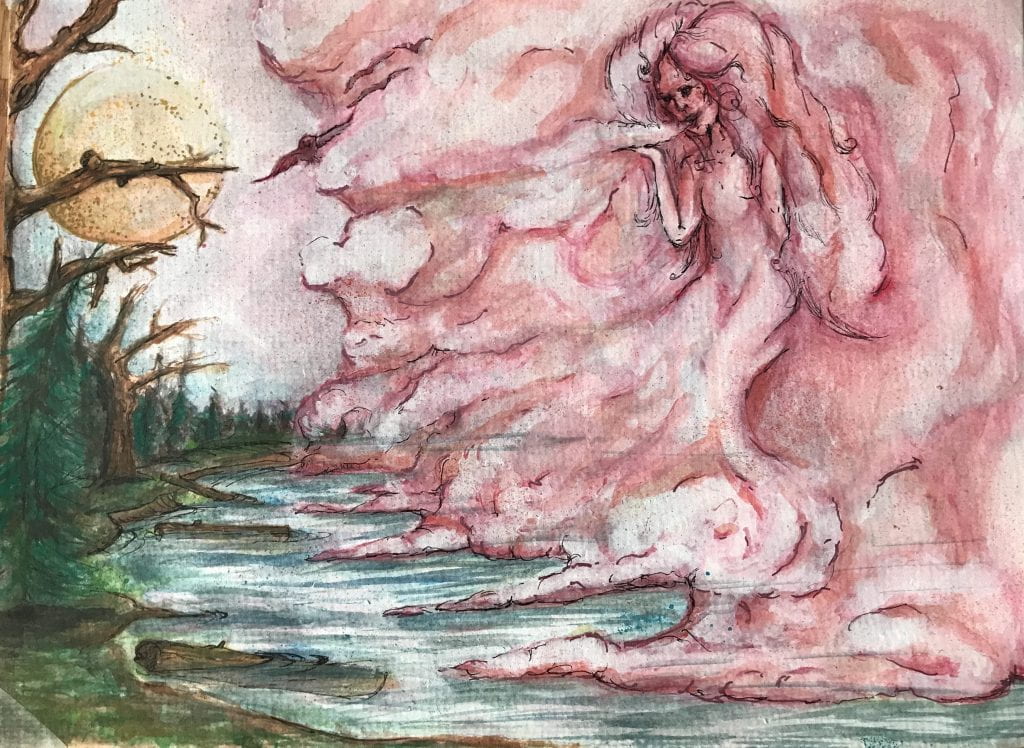Sofya Aptekar
TCCS Core Faculty
Observing Indigenous People’s Day with @decolonize_this at the @AMNH. #DecolonizeThisPlace #DecolonizeThisMuseum pic.twitter.com/Q76KjaAM3u
— Sofya Aptekar (@sofyaaptekar) October 9, 2018
For the third year in a row, I observed Indigenous People’s Day this past fall by joining the Anti-Columbus Day Tour at the American Museum of Natural History in New York. Even if you’ve never been in person, you might know this museum from the movie, Night At The Museum, where Ben Stiller plays a security guard. In general, I think most of us think of kids gawking at dinosaurs or maybe the giant whale hanging from the ceiling when we think of this museum. Pretty innocuous. Why, then, would a thousand protestors pack its halls screaming “Fire to the Colonizer”?
The Museum of Natural History is profoundly shaped by its active participation in settler colonialism and white supremacy. Aside from the dinosaurs and the giant whale, whole floors are devoted to racist displays of indigenous people of various regions. These dioramas feature thousands of artifacts (some sacred) taken from people across the globe, racist models and representations of human beings, and actual human remains, such as skeletons. As an organizer from Chinatown Brigade pointed out during the tour, exhibits of non-European, non-settler people – portrayed as primitive – are located between models of apes and displays of rocks and minerals.
Most of museum’s displays have not been changed in decades, sometimes not at all since being installed a hundred years ago. There have been no attempts to explain to visitors how the various artifacts have been acquired, not to mention the central role of this museum in the eugenics movement in the early 20th century. (NB: This museum actually hosted the International Eugenics Congress conference!) At the grand staircase entrance to the museum stands a statue of Theodore Roosevelt, who is celebrated inside as well. Roosevelt is riding a horse, towering over an African man on one side and a Native American man on the other. A city commission on symbols of hate in the city was split about what to do with this statue, and the activists demand that it be taken down because it celebrates settler colonialism and white supremacy.
Over $17 million dollars of public money flow into the museum every year, underscoring the need for this public institution to be held accountable to the very public it serves. This museum is also the place where hundreds of thousands of school children come to visit on school trips. New York City public school students, who are predominantly people of color, are exposed to exhibits that portray people of color in a degrading and dehumanizing way, without any contextual explanation.
The Anti-Columbus Day tour was certainly an opportunity to have a different experience in the museum. First, we gathered in a big hall as a group with our banners and signs, and used the people’s mic to communicate our goals for the tour. Then, Decolonize This Place brochures in hand, we split into groups to visit various exhibits on a self-guided tour, where we had “encounters” organized by participating organizations, which included NYC Stands with Standing Rock, Black Youth Project 100, South Asia Solidarity Initiative, Chinatown Art Brigade, and Take Back the Bronx. For example, in the Hall of African People, two young organizers with the Black Youth Project 100 used the people’s mic to talk about Ota Benga.
Benga was a Congolese man who was bought at a slave market and exhibited in the museum in the early 1900s. While they spoke, other participants unfurled huge banners from the second floor balcony reading, “Smash Patriarchy,” “Abolish White Supremacy,” and “Stolen Bodies on Stolen Land.” In the Hall of Biodiversity, activists covered the plaque of donors – which includes Monsanto – with a red banner that said “Support for AMNH provided by slavery, genocide, imperialism, and theft.”
#DecolonizeThisPlace #DecolonizeThisMuseum pic.twitter.com/furhFS4U4W
— Sofya Aptekar (@sofyaaptekar) October 9, 2018
At the end, we came together for a People’s Assembly, with hundreds of us sitting in an oval under the Great Canoe hanging from the museum ceiling. One speaker after another brought home the interconnectedness of so many struggles – deaths of indigenous women, police brutality, gentrification, Palestinian liberation, US military in the Pacific islands, and more. As the museum closed, we walked out together chanting Decolonize This Museum and filled the steps leading up to the Teddy Roosevelt sculpture, guarded tightly by the NYPD.
Read Jack Carolan’s article, “How to Make it in a Global City (Chances Are You Can’t…)”…
At this point you probably have a couple of questions. How can thousands of people do this in a museum? The organizers did tell the museum this would happen, in solidarity with the museum guards whom it would affect. What did other visitors to the museum think? My impression was that most were European tourists who were either bewildered or annoyed by our intervention. A few visitors did join the People’s Assembly and more than a few asked questions about what was going on. An organizer from the Chinatown Art Brigade standing in front of a display meant to represent some vague idea of Chinese culture was challenged by a tourist who said that he didn’t see a problem because he’d been to China and that’s what it looked like to him.
***
What would decolonization of the American Museum of Natural History look like? Well, let’s take a look at the Museum of Vancouver as an example. Last year, I visited this museum and I was blown away by an exhibit exploring the museum’s own role in colonialism and examining how it told the story of Vancouver that excluded the Musqueam people who continue to live there. This is not to suggest that Canada is a country that currently and completely respects indigenous people’s rights (just one example of how it doesn’t). Instead, I believe this example provides some alternatives for ways that museums might grapple with their racist and colonialist legacies – for the public good.
In the case of the American Museum of Natural History, decolonization would begin by removing the Teddy Roosevelt sculpture; doing a major overhaul of the racist dioramas; providing extensive new signage that educates visitors about the museum’s history; and endorsing the call to rename Columbus Day Indigenous People’s Day in New York City.
What do you think? Is there a cultural institution in your life that could use some decolonization? How do we make it happen?
Sofya Aptekar is Assistant Professor of Sociology and core faculty of the Transnational Cultural and Community Studies program at University of Massachusetts Boston. Follow her @sofyaaptekar










You must be logged in to post a comment.